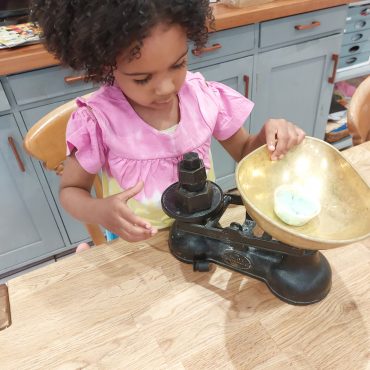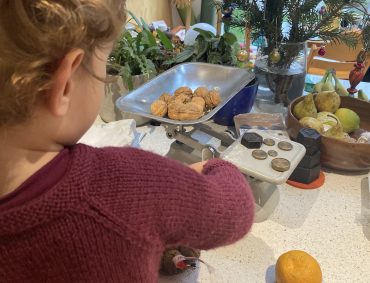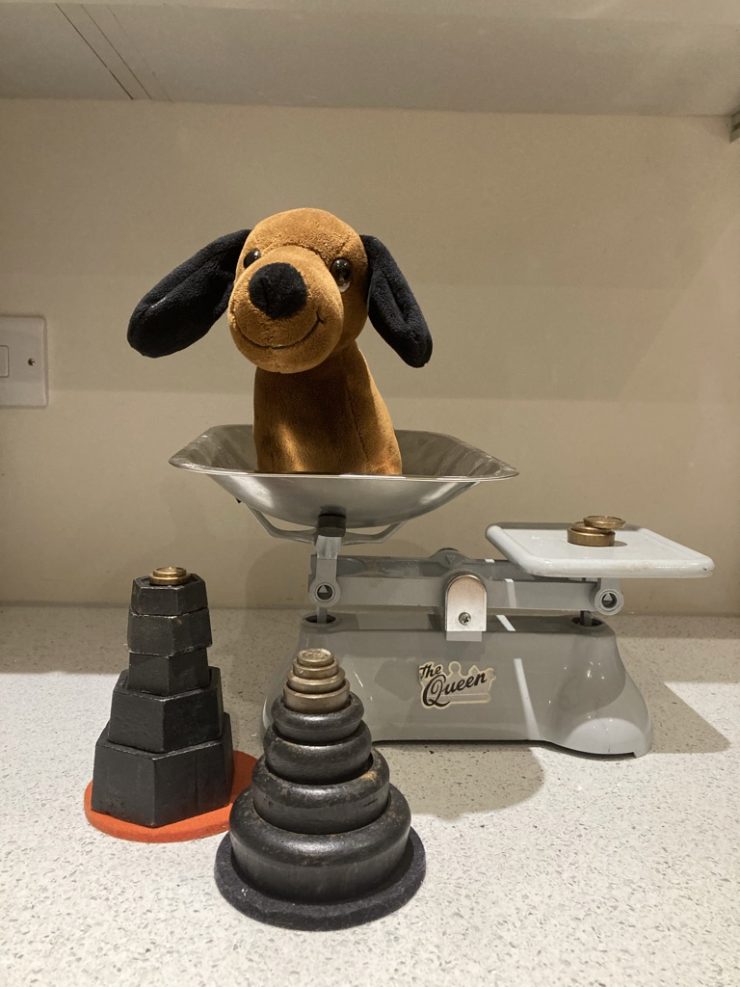Exploring maths in the early years of childhood and discovering maths is everywhere!
What’s the equivalent of a bedtime story, for maths? Numeracy seems to play out differently from literacy in children’s daily lives – and mealtimes, rather than bedtime, can be a great way to have some gentle fun with maths from a very early age. Welcome to a series of four Mealtime Maths stories from Maths on Toast founder, Alexandra Fitzsimmons.
Third Course:
I like baking, and I would definitely have baked with my toddler if I had known how much maths was involved. But the maths of food prep turns out to be very rich indeed.
There’s weighing: understanding heavier, lighter, and equal; understanding about being accurate; understanding the units of weight (kilograms and grams).

There’s measuring volume: more, less, too little, too much; understanding about being accurate; understanding the units and their relative sizes: teaspoon, tablespoon, millilitre, litre. And related to volume is capacity: can I fit that much water in that cup? Is it big enough?
All this is massive fun – pouring the flour, overflowing the water, and of course licking the bowl/spoon at the end. It’s also a very casual way to talk about maths. Our aim is to make yummy food. It just turns out that maths is kind of… there. And useful.
And as he gets older there’ll be more and more. We’ll get on to halving and doubling recipes; substituting ingredients (adding and subtracting); converting units. I’ve got ounce and pound weights as well as kilo and gram ones, and using those means exploring a different set of numbers and also supports binary counting (relevant these days as binary is how computers work).

I’ve made things even more fun by getting hold of a set of old-fashioned scales. This wasn’t just about fun. It’s an obsession of mine is that in our digital age, maths has got more and more remote and unreal, particularly for children. It’s perhaps most obvious with money, which has become digital most recently. While I remember my mother handing over cash – which I could hold – in exchange for apples at a market, I mostly show my own child a credit card and a ‘beep’. But the problem applies to weight and weighing too. How long is it since you picked up a kilogram – can you remember what it feels like?
The old-fashioned scales were an instant hit. The first thing we did was to pile up the weights to make pretend ‘cakes’. Since then we’ve played see-saw with the pan, learning to stop pouring the flour in “when it’s see-sawing” and inspected the weights, looking for familiar number-symbols. It’s prompted us to talk about bigger numbers like 100. And it’s fascinating watching just how long it takes to figure out that you put more in THAT side if it’s still sticking up in the air, not more in the other side!

